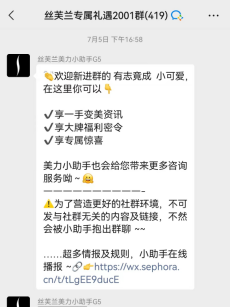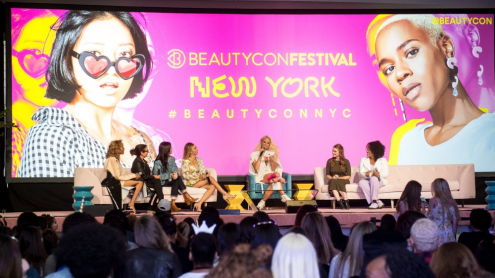Community-Led Brands & Retailers (Private Traffic) in China Aiming for Success
The idea of community leverages humans' social belonging and interaction instincts, placing value and emotion beyond the product or service. In this article, we analyze community-led brands & retailers and how they operate private traffic.
by Azoya
Increasing market competition and advertising costs have led brands to rethink their digital strategies to scale with profit. There has been a shift in marketing focus in China, where consumers increasingly value brand storytelling, connection, responsibilities, and the shopping experience. In China, this trend has promoted using social media platform WeChat and China’s original TikTok, Douyin, to build community-led brands and retailers.
According to CMXHub, 66% of retail professionals say that their online community has positively impacted customer retention and 55% say that they have seen increased sales.
The idea of community leverages humans’ social belonging and interaction instincts, placing value and emotion beyond the product or service. We are observing private traffic/domains including WeChat, and other social community tools in China, playing a pivotal role in the retail experience.
What do communities mean for brands and retailers?
Communities contribute to building trust between brands and customers, providing a virtual space for engagement and deepening brands’ understanding of their audiences.
Community builds trust among customers by establishing a persona, that resonates with customers, and understanding consumer pain points, as customers will unconditionally share their true thoughts about the brand. Armed with social insights about their consumers, brands can add more value to their customers. For instance, they can recommend products to customers on their birthdays to create a personal touch, personalize their offerings for superior relevance, and develop strong brand equity.
Furthermore, communities provide a virtual space where customers can actively participate in discussion topics, and connect with like-minded individuals, resulting in increased engagement between customers and brands. Communities also help brands better understand the audience by gathering feedback on their products and services.
Community input fuels product development with the co-creation of products and services with consumers, allows brands to listen to consumers’ unfulfilled demands and ultimately develops innovative products that have the potential to go viral. Such community-led product development processes have always been an important workflow for video game production. Now beauty and fashion brands increasingly leverage their communities for product co-creation.

Beauty Brand Colourpop
Seed Beauty Group’s product can be developed within 5 days, thanks to the direct participation of its users. Meanwhile, giant companies may need 12 months to do the same.
(Image source: https://colourpop.com/products/wish-you-were-here-full-collection-set)
Maintaining an active community is a science
Establishing a community is not the ultimate goal – it’s activating and leveraging user interactions to grow brand equity. Over 90% of communities tend to remain passive during the initial three months of their launch. Beauty brands and retailers can adopt various tools and tactics to achieve interactions that eventually contribute to brand equity.
The first one would be encouraging their customers to join an invitation-only community whether it's based on conversational apps or a traditional forum. This closed community is crucial to create a sense of privilege for members. In China, brands actively leverage WeChat to build chat groups, that can hold up to 500 members in a chat. Brands often develop groups based on shared interests, customer recency, frequency and monetary (RFM) tags, and member tiers. Developing communities is the most fundamental first step to creating a community-led brand.

Sephora’s WeChat groups welcome a new member.
The retailer also shares discounted products and interactive activities in the group.
Additionally, brands will generate relevant and inspirational content. The content driven by the community forms a cycle, resulting in increased engagement among community members. We are seeing beauty brands achieving success by producing community-generated makeup contests that attract participants.
Brands also create a community and forum where consumers are equal and free to speak. For example, Timage, a rising Chinese beauty brand, offers a beauty insider community where members receive captivating, exclusive content, including numerous makeup and skincare tips. This platform enables members to actively engage with one another, fostering an even more vibrant community.

A passage from Timage's WeChat public account teaches users how to put on eyeliner.
(Image source: https://mp.weixin.qq.com/s/gI2p6RuOpCnbH_MxLdZQBg)
Another approach is to launch community events, both online and offline, to bring beauty enthusiasts together. These in-person events are working well for brands because customers value social networking. NYX Professional Makeup organizes Beautycon, a popular beauty festival, where attendees can participate in workshops, meet influencers, and discover new products. These events are expected and welcomed by beauty fans every year.

The Beautycon festival attracts a global community of beauty enthusiasts.
(Image source: https://wwd.com/beauty-industry-news/color-cosmetics/beautycon-new-york-1202659610/)
Furthermore, brands develop loyalty programs that reward customers for their engagement and purchases. Customers could be engaged in multiple communities, and they will always pay more attention to the ones that reward their participation.
The most efficient method of brand engagement is to involve the community in the product development process. To make customers feel that they are important, valued stakeholders, the brand seeks their active feedback, conducts surveys, and runs focus groups to understand consumers‘ preferences and needs.
Fenty Beauty, created by Rihanna, has been praised for its inclusive shade range, which was developed by considering the diverse needs of the international beauty community.
What can brands learn from Chinese private domain practices?
China may not be the first market to adopt the approach of community-led brands and retailers, but it developed rapidly and we have seen a lot of innovative mechanisms. Some Western brands started much earlier by adopting Reddit, WhatsApp, and even Facebook Messenger to communicate with customers. In China, the private domain enabled by WeChat is becoming a must-have for brands and retailers. Private domain traffic marketing is a method brands use to communicate with customers by funnelling them into private channels like chat groups. Private domains allow brands to gain control over how and when they communicate with their audiences.
WeChat Work launched in 2016 and its usage accelerated due to the COVID-19 lockdown. Brands and retailers saw a disruption in sales channels and increased costs to serve customers. Therefore, they leveraged WeChat communities for customer relationship management (CRM), marketing, and education. Perfect Diary, a Chinese domestic beauty brand whose revenue reached over 2.3 billion yuan ($318 million US), created a “makeup friend” called “Xiaowanzi” (“小丸子” in Chinese) for community members, improving the shopping experience and bringing more orders and re-purchases.
Additionally, Chinese customers are more accustomed to community-led marketing because of the development of private domain marketing. They naturally believe that joining communities means receiving better rewards than if they were a customer who only visits stores.
Future opportunities for brand communities in China
The arrival of AI-generated content (AIGC) could change brand communities. Brands may leverage AI to communicate deeply and automatically with their consumers. The development of technology can also benefit most brands, as we see the cost of machine training tools becoming more affordable than ever. Thus, it means that in the future, brands can have their own trained AI to serve communities. Brands can use AI to replace daily customer service operations and develop digital humans as virtual associates.
We find that segmenting customers by interest is a tested approach to building an active community because customers have a shared interest in daily discussions. We found that young consumers are particularly interested in conversational communities. By forming groups of customers that share specific traits (location, jobs, favourite celebrities, products), brands will be able to attract a community that can stimulate organic discussion.
Customers may be silent – and in many cases, they are passive listeners in a community – but it does not always mean the community is obsolete or of no value. For a group with passive listeners, brands can still activate customers by endorsing key opinion consumers. Brands should avoid just becoming a spam bots because that could turn communities into impersonal newsletter tools.
It's not too early or too late to start a community – we learned this the hard way. Customers who shop on our websites have long wished to share their experiences with other people – so they are not lone shoppers. For a new brand, seed customers can bring enormous value for brands to discover their fit in the market. For a more mature brand, they can always benefit from learning about what their customers truly think about the brand.
Key Takeaways:
1. Communities contribute to building trust between brands and customers, providing a virtual space for engagement that deepens brands’ understanding of their audiences.
2. Establishing a community is not the ultimate goal; it’s activating and leveraging the users’ interactions to grow brand equity.
3. Chinese brands and retailers saw a disruption in sales channels and increased costs to serve customers, therefore they leverage WeChat communities for CRM, marketing, and education.
4. For a new brand – seed customers can bring enormous value for brands to discover their fit in the market.